Welcome to North Ossetia! This region is home to various birds, from migratory species to year-round residents. From the snow-capped peaks of the Caucasus Mountains to the banks of the Terek River, North Ossetia is a paradise for birdwatchers and nature lovers alike.
From the majestic lammergeier to the colorful azure tit, North Ossetia is home to some of the most beautiful and diverse bird species in the world.
Whether looking for a stroll through the countryside or a more challenging bird-watching excursion, North Ossetia has something for everyone. So explore the region and discover all the beautiful birds of North Ossetia.
13 Birds to Watch in North Ossetia
North Ossetia is a region on the northern slope of the Caucasus Mountains, bordering Russia and Georgia. It is a place of stunning natural beauty, rich cultural heritage, and diverse wildlife.
Among the many attractions of North Ossetia are its birds, which range from rare and endangered species to common and colorful ones.
Here are 13 birds that you can watch in North Ossetia, along with some information about their habitats, behaviors, and conservation status.
1. Curlew Sandpiper
The Curlew Sandpiper is a small shorebird breeds in Arctic Siberia’s tundra. This species is highly migratory, meaning they often migrate long distances to their wintering grounds.
These birds can be found in Africa, South and Southeast Asia, Australia, and New Zealand in the winter. Occasionally, these birds have been spotted as far away as North America, making them vagrants or wanderers in this area.
| Kingdom | Animalia |
| Phylum | Chordata |
| Class | Aves |
| Order | Charadriiformes |
| Family | Scolopacidae |
| Genus | Calidris |
| Species | C. ferruginea |
2. Common Sandpiper
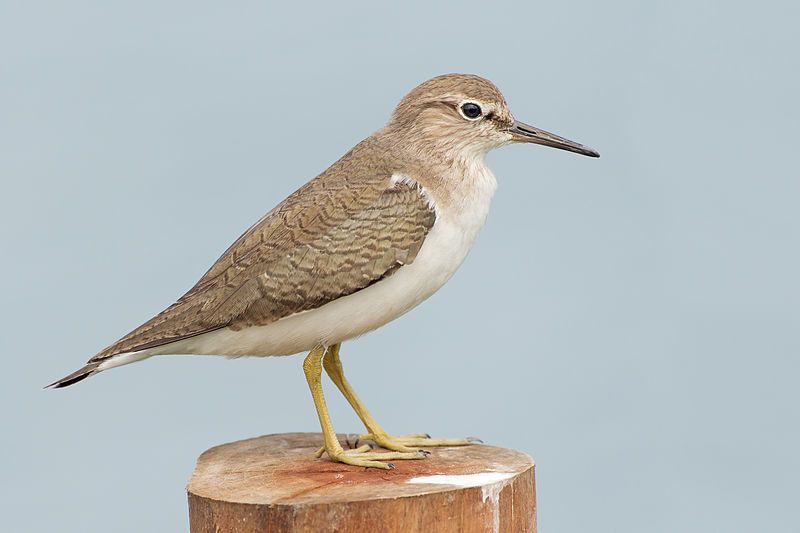
The common sandpiper is a small wader bird in the Palearctic region. It belongs to the genus Actitis, including its American sister species, the spotted sandpiper.
The two species are parapatric, meaning their distributions overlap but do not completely cover the same areas. This means that a bird of one species can migrate into the range of the other species and settle down with breeders of the other.
This can lead to hybridization between the two species, where the offspring of the two species have characteristics of both.
| Kingdom | Animalia |
| Phylum | Chordata |
| Class | Aves |
| Order | Charadriiformes |
| Family | Scolopacidae |
| Genus | Actitis |
| Species | A. hypoleucos |
3. Red Knot
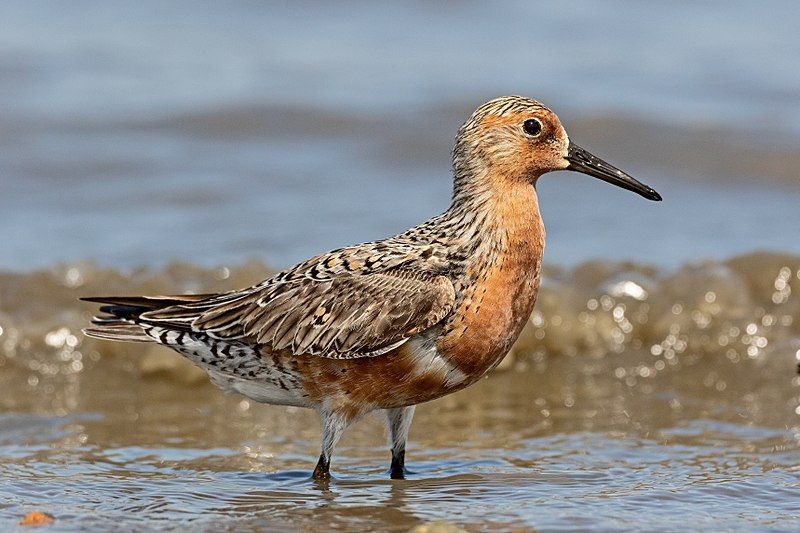
The Red Knot, or the Just Knot, is a medium-sized shorebird found in the tundra and Arctic Cordillera regions of Canada, Europe, and Russia.
It is a member of the Calidris sandpiper family and is the second-largest bird in the family, with the Great Knot being the largest. There are six recognized subspecies of the Red Knot, each with unique characteristics and behaviors.
The Red Knot is well-adapted to the extreme cold climate of the Arctic, with highly insulating and waterproof feathers. Its migratory behavior is also adapted to cold climates, as Red Knots tend to migrate to warmer climates during winter.
Red Knots have an impressive range of migration, often traveling thousands of miles between winter and summer habitats. The Red Knot is a species of conservation concern due to its declining numbers.
This is mainly due to the destruction of its habitat, climate change, and human activities such as hunting and fishing. The illegal egg collection also threatens the Red Knot in some of its breeding grounds.
Various conservation initiatives have been put in place to conserve this species, such as habitat restoration, nest protection, and population monitoring. The Red Knot is a fascinating species of great importance to our environment.
It is essential to recognize this species’ significance and take the necessary steps to ensure its population remains stable.
| Kingdom | Animalia |
| Phylum | Chordata |
| Class | Aves |
| Order | Charadriiformes |
| Family | Scolopacidae |
| Genus | Calidris |
| Species | C. canutus |
4. Tufted Duck
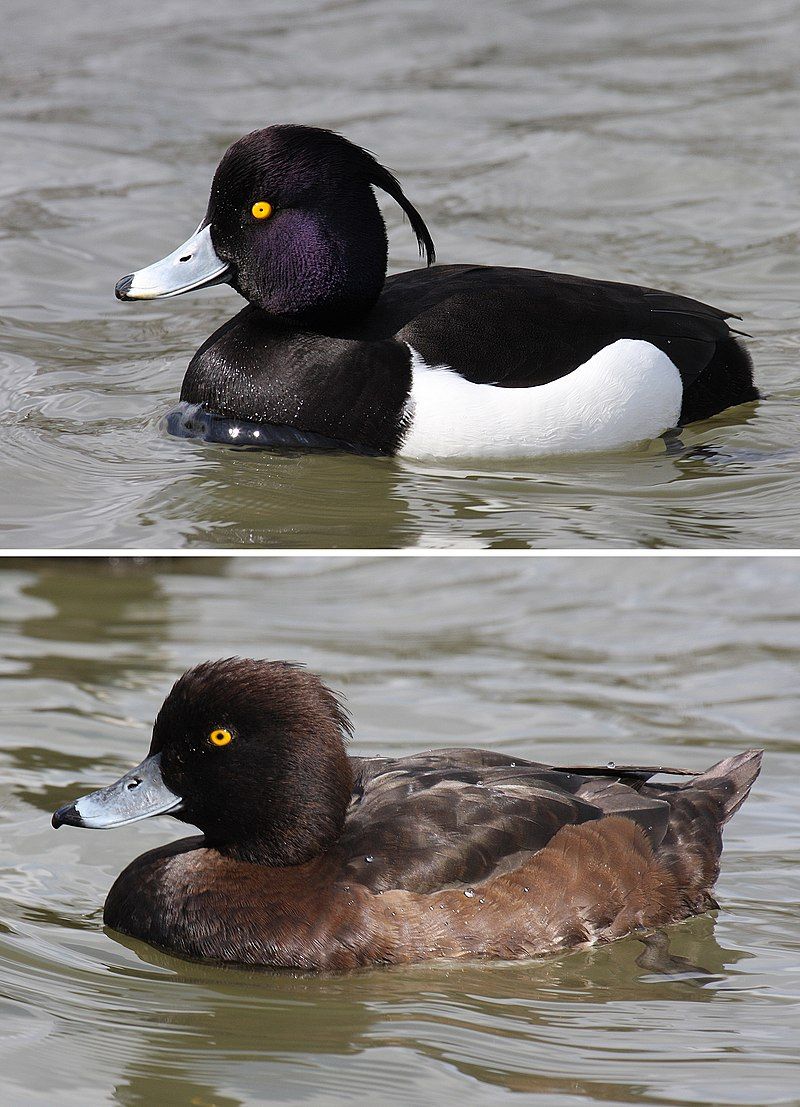
The Tufted Duck, also known as the Tufted Pochard, is a species of small diving duck with a population of nearly one million birds. This species is found mainly in northern Eurasia, from Finland to Russia.
Its scientific name is derived from two Latin words – “fuligo,” meaning “soot,” and “gula,” meaning “throat.”
This peculiar name was taken from Ancient Greek references to an unidentified seabird mentioned by authors such as Hesychius and Aristotle. The Tufted Duck is a species of duck with a unique appearance: a white face, black crown, and chestnut-brown body.
They also have a distinctive tuft of feathers on their heads, which gives them their name. They are usually found in shallow waters like marshes, ponds, and lakes.
They feed mainly on aquatic plants, insects, and small fish. The Tufted Duck is a species of duck that is of conservation concern due to its low population size and limited range.
Conservation efforts have been put in place to ensure the survival of this species, including habitat protection and the establishment of protected areas.
| Kingdom | Animalia |
| Phylum | Chordata |
| Class | Aves |
| Order | Anseriformes |
| Family | Anatidae |
| Genus | Aythya |
| Species | A. fuligula |
5. Osprey
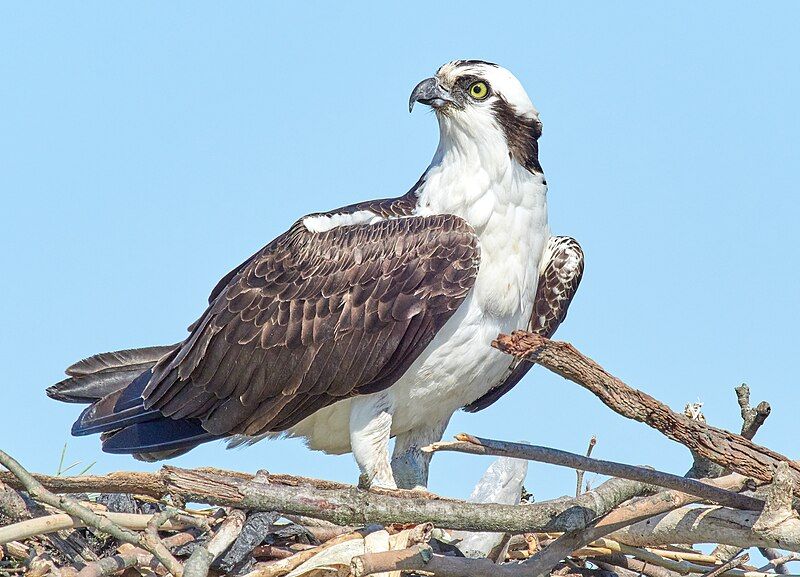
The Osprey is a bird of prey that is found all over the world. It is also called the sea hawk, river hawk, and fish hawk because it mainly eats fish. It is a large bird, reaching over 60 cm long and 180 cm across the wings.
Its upperparts are brown, and its head and underparts are primarily grey. It is an active predator during the day, unlike owls, which hunt at night.
The Osprey is an impressive sight in the sky as it swoops to catch its prey, making it an iconic symbol of nature.
| Kingdom | Animalia |
| Phylum | Chordata |
| Class | Aves |
| Order | Accipitriformes |
| Family | Pandionidae |
| Genus | Pandion |
| Species | P. haliaetus |
6. Black-tailed Godwit
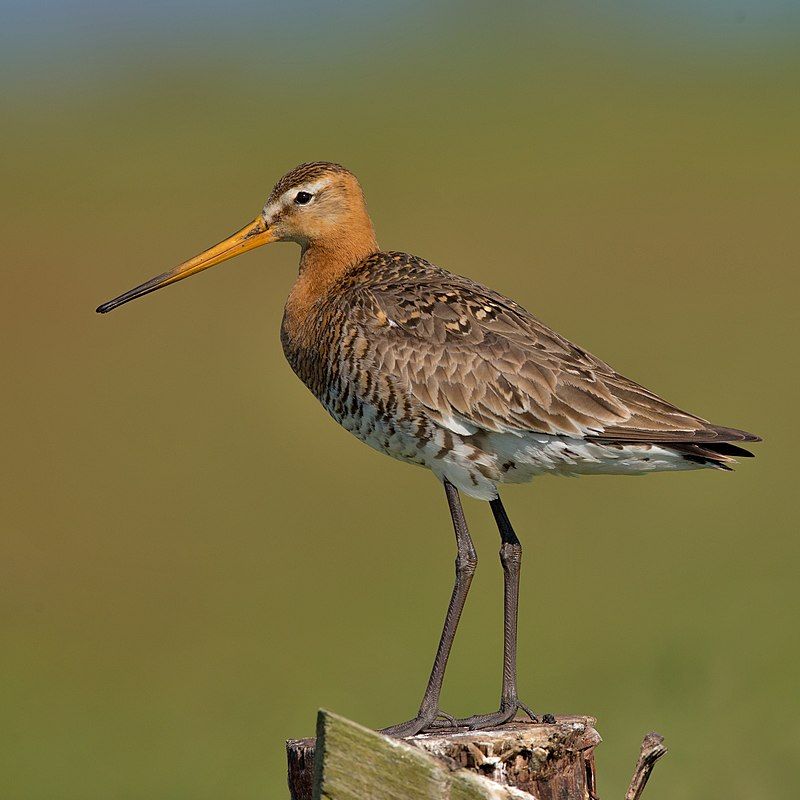
The black-tailed godwit is a species of shorebird that is part of the godwit genus Limosa. It was first described by the famous Swedish biologist Carl Linnaeus in 1758. This bird species is characterized by its large size, long legs, and bill.
The black-tailed godwit is a wading bird near wetlands, rivers, lakes, and estuaries. The black-tailed godwit is a migratory bird typically breeds in northern Europe and Asia.
During winter, these birds fly south to Africa, India, and Australia. These birds form large flocks during their migratory journeys. The black-tailed godwit feeds on various invertebrates, such as insects, mollusks, and crustaceans.
They also feed on small fish and other aquatic organisms. The black-tailed godwit is a conservation concern, as its populations have declined over the last few decades.
This is due to various factors, including habitat loss and degradation, hunting, and pollution. Conservation efforts, such as habitat protection and restoration, are essential to ensure the species’ survival.
| Kingdom | Animalia |
| Phylum | Chordata |
| Class | Aves |
| Order | Charadriiformes |
| Family | Scolopacidae |
| Genus | Limosa |
| Species | L. limosa |
7. Buff-breasted Sandpiper
The buff-breasted sandpiper is a small shorebird belonging to the calidrid sandpiper family. Its species name, subruficollis, is derived from Latin, with subrufus meaning reddish and Collis meaning “-necked/-throated”.
This name fits the buff-breasted sandpiper, as its neck and throat area are reddish-brown. The entire bird is mainly grayish-brown, with a white belly and chest, giving the bird its name.
The buff-breasted sandpiper is a migrant species that travels great distances from its breeding ground to its wintering ground. During the breeding season, the buff-breasted sandpiper can be found in the northernmost parts of North America.
During winter, it travels to South America, where it spends its time in the grasslands and open fields. This shorebird species is considered endangered due to habitat loss, overgrazing, and pollution.
Therefore, it is essential to try to conserve the species and its habitat to ensure the survival of the buff-breasted sandpiper.
| Kingdom | Animalia |
| Phylum | Chordata |
| Class | Aves |
| Order | Charadriiformes |
| Family | Scolopacidae |
| Genus | Calidris |
| Species | C. subruficollis |
8. Long-tailed Tit
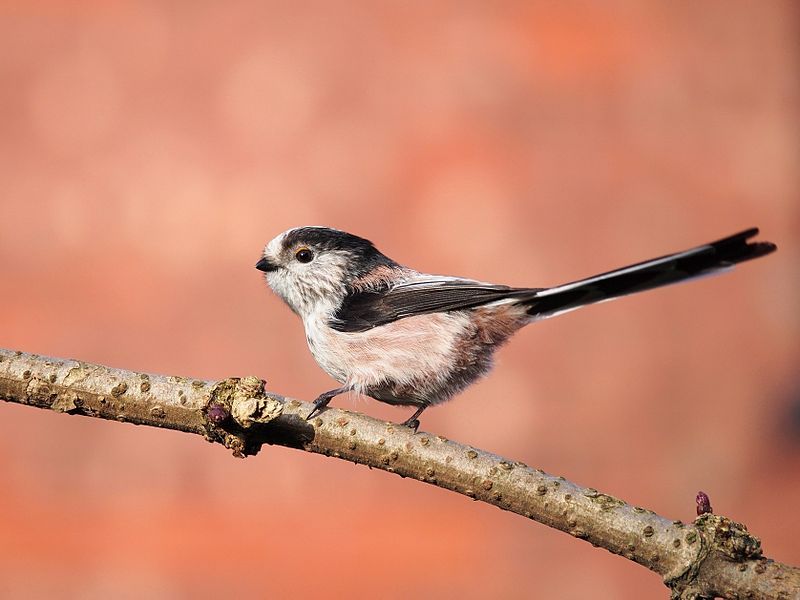
The long-tailed tit, also known as the long-tailed bushtit, is a common bird found across Europe and the Palearctic region. It belongs to the Aegithalos genus and is one of the species that Aristotle referred to when he first described this group of tits.
The long-tailed tit is a small bird with black and white plumage and a long tail. They are often seen in small flocks as they hop around from tree to tree, searching for insects and other food. They also build a nest out of moss and lichens and line it with feathers.
Their diet comprises small insects, spiders, seeds, fruits, and berries. They are very social and can be found in mixed flocks with other birds, such as finches and sparrows.
The long-tailed tit is a fascinating species, and it is a great joy to watch them as they flit around in search of food or as they build their nests in the trees.
| Kingdom | Animalia |
| Phylum | Chordata |
| Class | Aves |
| Order | Passeriformes |
| Family | Aegithalidae |
| Genus | Aegithalos |
| Species | A. caudatus |
9. Rock Dove
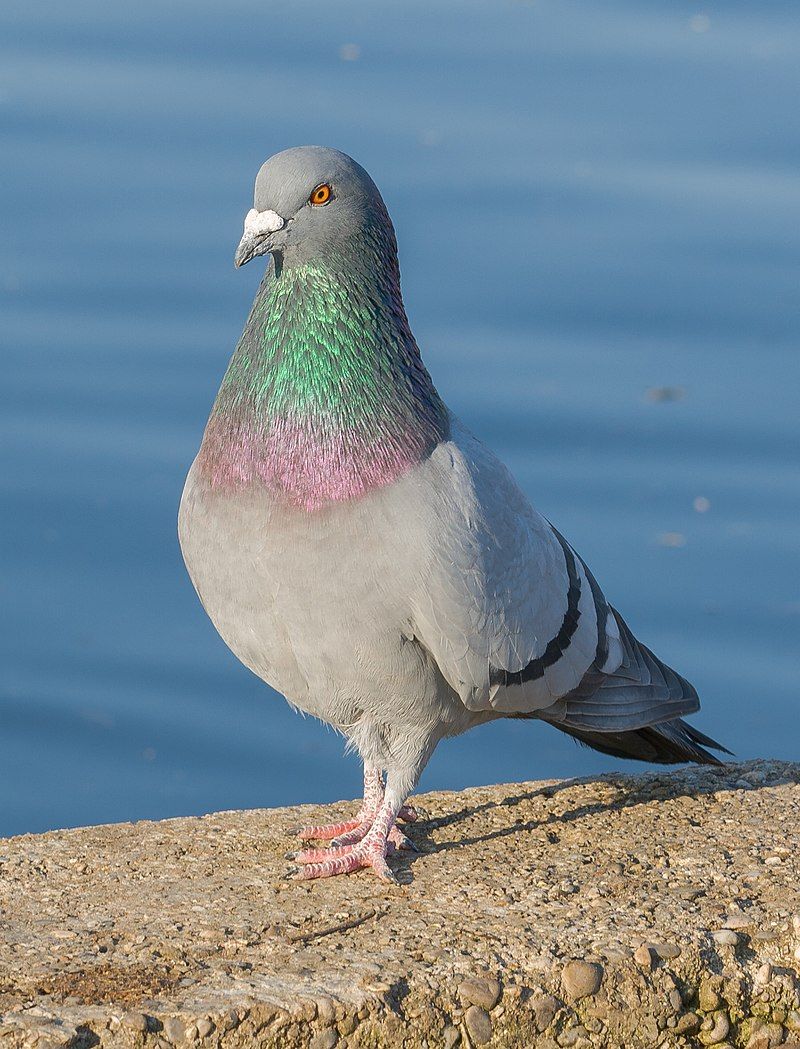
The rock dove, rock pigeon, or common pigeon is a species of bird belonging to the Columbidae family. It is commonly referred to as simply the “pigeon.” The domestic pigeon is a descendant of this species and is the result of domestication.
Over time, some of these domesticated pigeons have escaped and established themselves in the wild, resulting in large populations of feral pigeons being seen in many areas of the world.
This has significantly impacted the local bird populations, as the feral pigeons compete with other birds for food and resources.
| Kingdom | Animalia |
| Phylum | Chordata |
| Class | Aves |
| Order | Columbiformes |
| Family | Columbidae |
| Genus | Columba |
| Species | C. livia |
10. Sharp-tailed Sandpiper
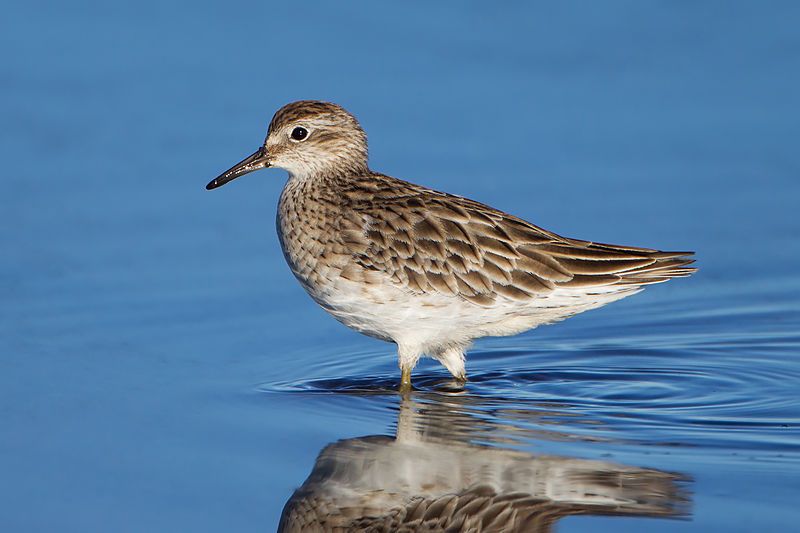
The sharp-tailed sandpiper is a migratory bird species belonging to the wader or shorebird family. It can be identified by its small to medium size and its sharp-pointed tail feathers. This species is mainly found in Siberia, where it breeds during the summer.
During the winter, it migrates to Australia for food and a more temperate climate. This species has adapted to living in both temperate and cold climates, allowing it to migrate to survive.
It typically feeds on aquatic invertebrates like insect larvae, crustaceans, and mollusks. It can often be found foraging along the shoreline or in shallow wetlands.
The sharp-tailed sandpiper is a critical species in the food chain, providing essential resources for larger predators that feed on them. In addition, their droppings act as a fertilizer, providing critical nutrients to the soil and encouraging plant growth.
As a result, they play an essential role in the ecosystem’s health.
| Kingdom | Animalia |
| Phylum | Chordata |
| Class | Aves |
| Order | Charadriiformes |
| Family | Scolopacidae |
| Genus | Calidris |
| Species | C. acuminata |
11. Pectoral Sandpiper
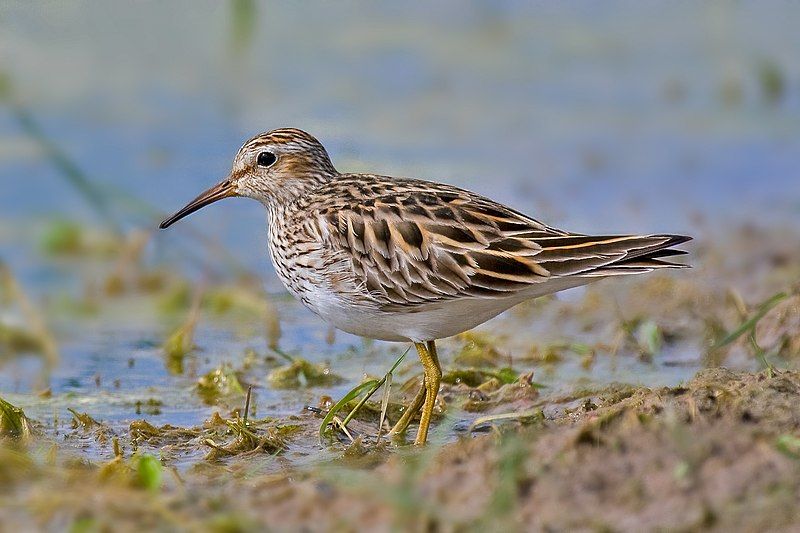
The pectoral sandpiper is a small migratory wader bird found on multiple continents. It breeds in North America and Asia and, in winter, migrates to South America and Oceania. This species feeds on small invertebrates and builds its nest in the ground.
The nest is a hole scraped in the ground and lined with thick material, protecting it from the cold winds of its breeding grounds. It typically lays four eggs in its nest and can protect them from the elements.
The pectoral sandpiper is a species that can adapt its nesting behavior and migratory patterns to survive and thrive in various climates.
| Kingdom | Animalia |
| Phylum | Chordata |
| Class | Aves |
| Order | Charadriiformes |
| Family | Scolopacidae |
| Genus | Calidris |
| Species | C. melanotos |
12. Eurasian Collared Dove
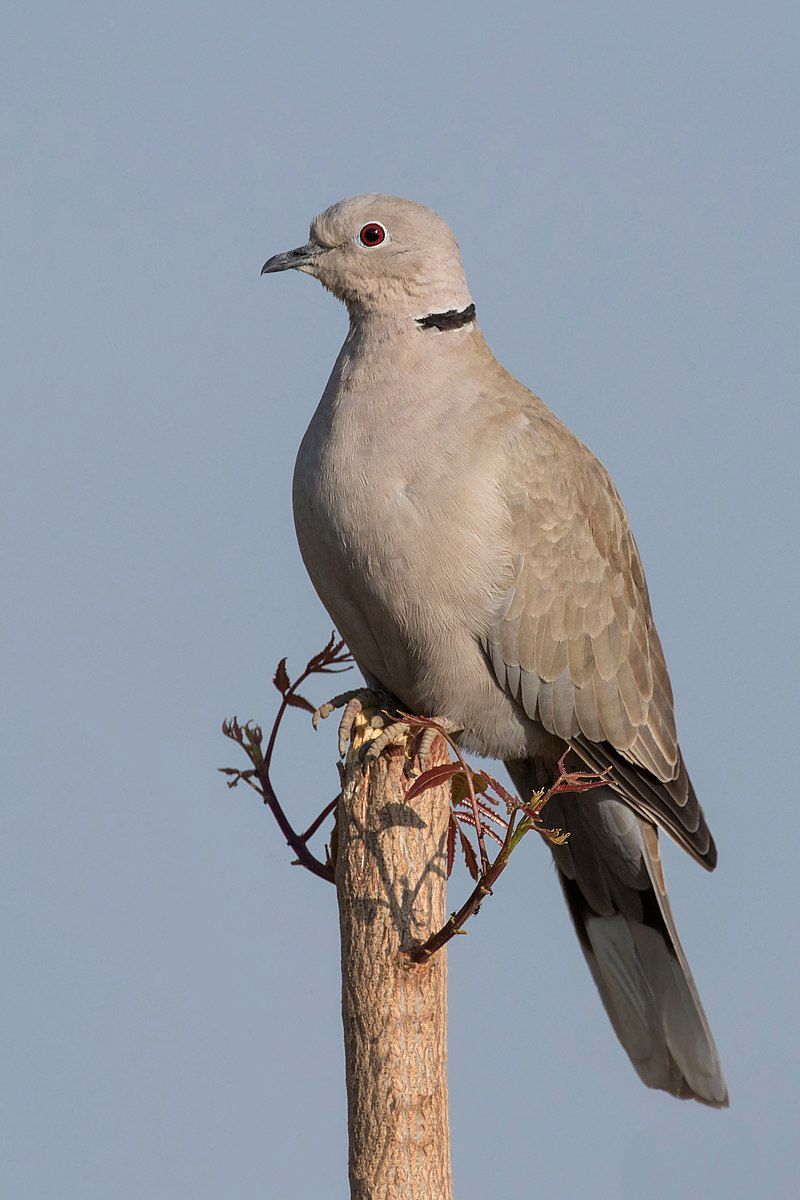
The Eurasian collared dove is a species native to Europe and Asia. It has a vast global range, which includes Japan, North America, and many islands in the Caribbean. This species has been introduced to many of these areas, leading to an increase in its population.
As a result, it has been listed as Least Concern on the IUCN Red List since 2014.
This is due to the Eurasian collared dove’s significant population growth and wide distribution. The Eurasian collared dove is a medium-sized dove with a body length of around 30 cm and a wingspan of around 60 cm.
It is primarily greyish-brown, with a black half-collar on the back of its neck. It is a monogamous species that builds its nests in trees, shrubs, or ground.
It feeds on a variety of grains, fruits, and insects. The Eurasian collared dove is a highly adaptable species, which accounts for its successful introduction and expansion in many areas.
It can live in various habitats, including urban areas, and is not threatened by human activity.
It is also a very vocal species, with various distinctive cooing sounds. Overall, the Eurasian collared dove is a successful species with a broad global range and increasing population trend.
It has been listed as Least Concern on the IUCN Red List since 2014 due to its vast global range and increasing population trend.
| Kingdom | Animalia |
| Phylum | Chordata |
| Class | Aves |
| Order | Columbiformes |
| Family | Columbidae |
| Genus | Streptopelia |
| Species | S. decaocto |
13. Great Bustard
The great bustard is a bird belonging to the bustard family and is the only living species in the genus Otis. It is found in many different places worldwide, from northern Morocco to Central and East Asia, and inhabits open grasslands and farmland.
This bird is well-adapted to various climates and can be found in temperate regions and more tropical and arid areas. Its habitat also includes agricultural land, providing the bird with food and shelter.
The great bustard is a large bird species, with the males typically weighing up to 20kg. These birds are omnivorous, meaning they eat various plants and animals, and they are known to feed on small mammals, insects, and even other birds.
The great bustard is also an essential part of the food chain, and their presence helps to maintain grassland habitats and provide food for other species.
| Kingdom | Animalia |
| Phylum | Chordata |
| Class | Aves |
| Order | Otidiformes |
| Family | Otididae |
| Genus | Otis |
| Species | O. tarda |
Conclusion
North Ossetia is an excellent bird-watching place with various species present. The region is also home to several rare and endangered birds, including the Caspian Snowcock, the Caucasian Grouse, the Caucasian Black Grouse, and the Eurasian Pygmy Owl.
Birds visiting North Ossetia can look forward to seeing remarkable species in their natural habitat. They will enjoy the beautiful scenery and diverse birdlife the region offers.